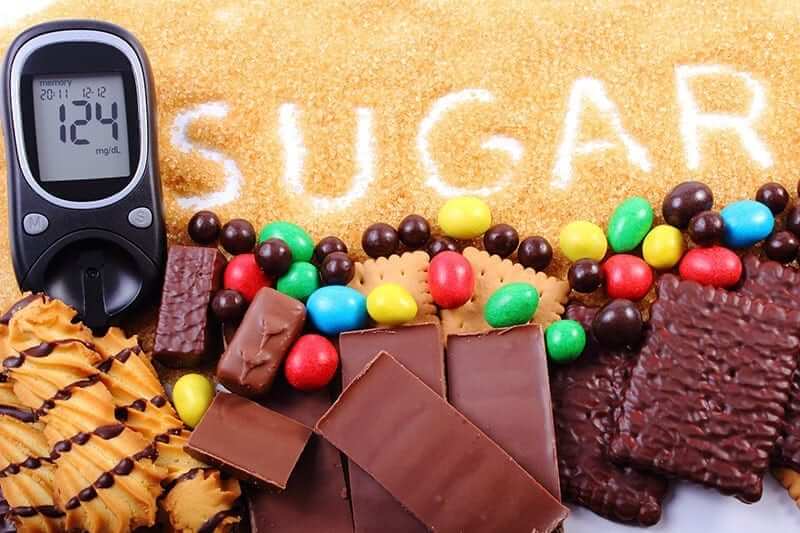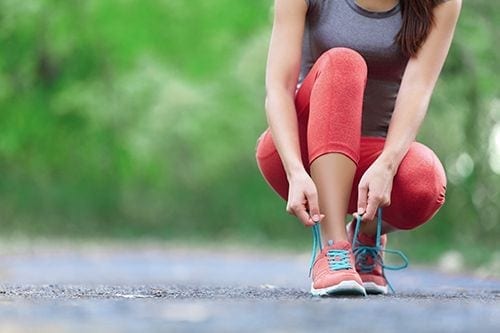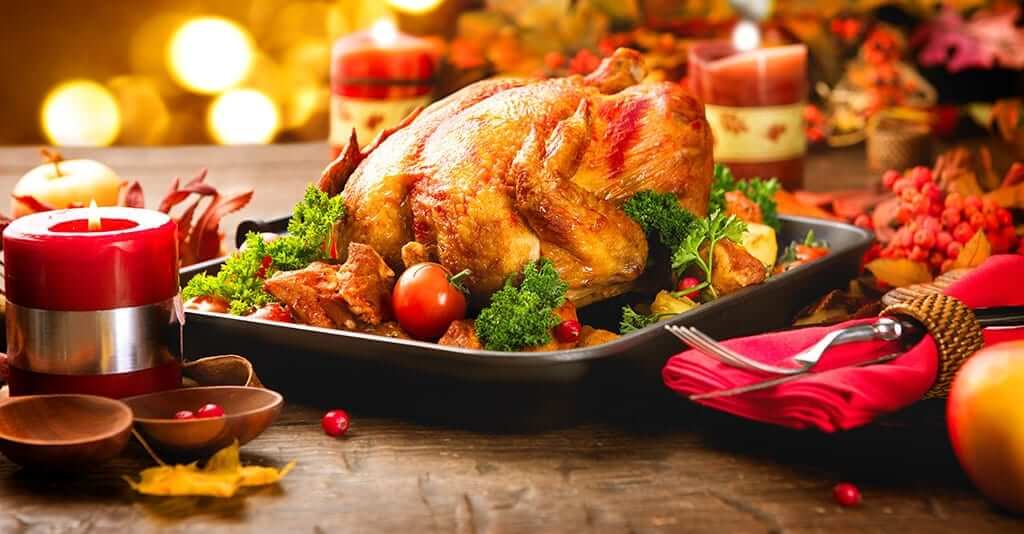A study by The World Obesity Federation showed, “The cost of treating obesity will reach 1.2 trillion dollars annually by 2025 across the world.” The US is poised to surpass all the other nations in terms of health costs related to obesity. The average holiday meal measures up to 3000 calories, which is more than most people should consume in an entire day! It is always difficult to maintain weight but during the holidays, people want to “feel the season through appetizers, plenty of food, enticing drinks, and gooey, rich desserts.” Then comes the after-holiday weight gain. Or does it? There are many myths circulating out there when it comes to food, holidays, blood sugar and diabetes, so let’s look and learn from them. Here we go:
1. Holiday Weight Gain Myth
You will hear many variations about the average holiday weight gain which appears by the end of New Year’s week varying between 6-10 pounds. If you carried 10 pounds dumbbells in your hands for 15 minutes, you would understand how uncomfortable that would be. Luckily, recent studies show that the real average amounts to about 1 pound when people are conscious of what and how much they are eating.
2. Superfoods Myth
So much publicity hovers around “new superfoods” or “foods of the moment” without any real science being applied. Many of these products appear during the holidays when people have their wallets wide open. Should I be eating Spirulina, Maca, raw cocoa, dandelion, blue green algae, acai juice, Goji berries or charcoal infused foods to support my health? “Highly specialized foods are no more nutrient dense or beneficial than common every day, cheaper superfoods and do not need to be purchased with expensive prices.
To Keep to real, local, easily available foods such as blueberries which contain more antioxidants than any other fruits or vegetables. Although blueberries can be found year-round, the cost does jump during holiday season and winter. Luckily, frozen blueberries packed in no juice or added sugar are easy to find all year long. They provide Vitamin C which are great to ward off winter colds and also offer plenty of fiber. Blueberries are a “super star for improving memory.”
Even though everyone has become “kaled out”, Kale is readily available, easy to incorporate into luscious green salads and contains calcium (for those who do not eat dairy), iron and fiber. A food containing fiber, “is a person with diabetes very best friend.”
Strawberries are delicious, easy to incorporate into salads, breads or desserts, are not fancy or trendy and are always available fresh or frozen. They are high in Vitamin C which helps with tissue repair and contains ellagitannins.
Pistachio nuts are priced right even during the holidays, especially when purchased in the shell. They can be eaten as a snack in a small serving size or added to holiday breads, casseroles or stuffing. Pistachios contain potassium which is needed for proper heart function.
Cranberries are abundant during the holiday season and should be used fresh instead of canned to reduce added sugar. If using the canned variety of cranberry sauce, look for the “no added sugar” brand. Cranberries fight inflammation, improve oral health, may reduce the risk of urinary tract and yeast infections and reduce the risk of heart problems. Substitute Splenda or Truvia in recipes which call for white sugar when baking or cooking with cranberries.
Turkey is a holiday time favorite and reasonably priced superfood, if it is not deep fried, drowning in gravy or basted hourly in butter. Turkey contains folic acid, Vitamin B, zinc and potassium. The dark meat has more fat and calories but is certainly ok when eaten in moderation since it does have a richer flavor. The dark meat contains most of the iron and zinc. These vitamins and minerals boost your immune system, may protect you from heart disease, cancer and help keep your cholesterol in check. The level of tryptophan in turkey is not what makes you tired after the meal, it is from the huge quantity of food and carbohydrate load being consumed. The most nutritious way to indulge on turkey is to eat the breast meat without skin as this instantly removes hundreds of calories. Pecans, which are often added to holiday casseroles, breads and salads contain Vitamin E, protein, fiber and healthy fats. If using pecans as an appetizer, eat them plain, instead of rolling in butter and sugar.
3. Slim Myth
I’m slim so I’m healthy and I can eat what I want since I will never get diabetes. Not all slim people are diabetes free since 20% of people with type 2 diabetes are thin or normal weight. People who are thin are not always disease free. Also, not all overweight people have diabetes or other chronic illnesses. Try to focus on the nutritional benefit of food, flavor, freshness and variety of food. For example, instead of eating a white dinner roll slathered in butter, put some sliced avocado in your salad. The calories may be the same, but the nutritional content will be better. Make reasonable and delicious choices whether, “thin or thick.”
4. Avoid All Sugar Myth

5. I Can Always Eat Sugar If It Is the Natural Kind Myth
Many people switch out white table sugar for exotic local honey, maple syrup, black molasses, brown sugar and Agave for baking and food preparation needs during the holidays. All these products will enter your blood stream quickly and raise blood sugars even if they sound healthier and more appealing. Take a taste of what you are craving, whether white sugar or brown and then move away from the table.
6. Fatty Foods Are Always Bad for You When You Have Diabetes Myth
It again depends on choices and portion sizes. Although there is still controversary surrounding, “eating butter and full fat cheese in the medical world”, you can stay safe eating crusty bread dipped in flavorful, spicy, olive oil dip as opposed to bread drenched in butter. Hit the mixed olive tray and nut dish instead of eating the creamy dip with greasy, salty chips. Choose the turkey or salmon fillet over the prime rib or rack of lamb. Create your own salad dressings with Dijon mustard, olive oil, red, wine vinegar and herbs instead of using the creamy Ranch or Thousand Island. Add sliced or cubed avocados to the salad and skip the croutons and bacon bits. “Replacing saturated fat with unsaturated fat may decrease death rates by 27%.”
7. Resurgence of The “Dissociated Diet” Myth
There was a time in the 1970’s, when “mixing foods”, such as protein, fat and carbohydrates during one meal was considered, “hard on the digestion” and messed with absorption. It stated that, “it was hard to digest alkaline and acidic foods at the same time which caused weight gain and a decrease in metabolism.” It was originally called “food combining” and stated, “eat only protein at one meal, fat at the next meal and carbohydrate at the final meal without combination.” That would mean a Thanksgiving or Christmas dinner would only be turkey or ham, or just rolls and sweet potatoes or possibly just butter and cheese. This makes no sense since once the stomach acid is involved it breaks down all types of foods. According to Lindsey Pine, RDN, “it is beneficial to mix carbs, proteins and fats to get a wide variety of tastes and nutrients, prevent blood sugar spikes and provide satiety by eating protein and fat.” Avoid this eating fad of the present moment. Build holiday meals around complete combinations of foods including fiber. You will truly enjoy your holiday meal and your blood sugars will behave.
8. Detox with a Juice Fast at the End of the Holiday Myth.
This is an absolute ‘No’! Your body uses the kidneys and liver as its own detox system and rids you of toxins through urine, perspiration and feces. Using a juice detox may mess with your electrolytes, hydration, energy level, blood sugars and metabolism. After the holidays, go back to the plate method of eating: 1/2 a plate of vegetables, 1/4 of protein and 1/4 of carbohydrates and drink plenty of water.
9. Do Not Exercise at the End of the Holiday Meal Myth

10. Just Give in to Holiday Stress Myth
No way! More than ever, you should use stress management techniques such as deep breathing, yoga, meditation, exercise and proper sleeping habits. Do not take short cuts during the holiday season since it will back fire on your energy levels and immune system. Wait at least 3 hours before lying down after a heavy meal for best sleep. High fat evening meals may keep you up since it activates digestion and may send you on frequent bathroom trips. Do not overdo alcohol intake since it is a depressant until about 1:00-2:00AM and then becomes a stimulant. It then wakes you up and makes it difficult to fall back to sleep. Alcohol can cause nighttime palpitations, dehydration, night sweats, nightmares and restless sleep. Try to wait 5 hours after drinking before you go to sleep.
The holiday season is meant to be enjoyed. With simple changes and attention to improved habits, you can enjoy the season without any problems or mishaps. Happy holidays!
Have a question or comment? Then post below, no registration required. I would love to hear from you!
NOTE: Consult your Doctor first to make sure my recommendations fit your special health needs.







Leave A Comment